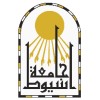
Assessment of Psychological Symptoms and Health Related Quality of Life in Patients With Irritable...
IBS - Irritable Bowel SyndromeTo evaluate the relation between the clinical presentations and the psychiatric co-morbidities with the quality of life in patients with irritable bowel syndrome.

Pro-vascular Regenerative Cell Exhaustion in Women With Polycystic Ovarian Syndrome
Polycystic Ovary SyndromePCOS-RCE is an observational, cross-sectional, two-arm study that is aimed at determining if an established diagnosis of polycystic ovarian syndrome (PCOS) influences the number of blood vessel-forming stem cells in the bloodstream. Circulating progenitor cells will be enumerated and the distribution patterns of these cell types will be assessed to determine if these parameters differ between individuals with PCOS and individuals without PCOS. Specifically, this study will evaluate if differential regenerative cell exhaustion (RCE) may account, at least in part, for the differences in cardiovascular risk reported between individuals with a diagnosis of PCOS and those without.

Efficacy and Safety Safety of Nutritears® in Adults With Dry Eye Syndrome
Dry EyeDry Eye SyndromesThis is a prospective, randomized, double-blind, parallel, placebo-controlled, clinical interventional study. The purpose of this study is to evaluate the efficacy and safety of Nutritears®, a dietary supplement of OmniActive Health Technologies, in adult subjects with dry eye syndrome (DES). Subjects shall be instructed to consume one capsule of their assigned investigational study product every morning after the breakfast, at the same time every day, for 56 days (8 weeks).

Global Postural Reeducation Versus Neck Stabilization Training on Text Neck Syndrome.
Neck SyndromeThe study will be randomized control trial. The study will be conducted in Iqbal Mehmooda Trust Hospital. Group A will be treated with global postural reeducation. Group B will be treated with neck stabilization training. Non probability consecutive sampling technique will be used. Patient below 20-40 years, participants who use smart phones for 8 hours per day(guidelines), angle of forward head pasture above 15, screening picture tool. Neurological defects, trauma, tumor, shoulder injury, cervical disc disease. REBA questionnaire, NDI, Goniometry, NPRS will be used as a tool. The global postural reeducation will be applied on group A while neck stabilization training will be applied on group B. The aim of this study will be to compare the effects of of global postural reeducation and neck stabilization training on text neck syndrome.

Tolterodine Relieves Overactive Bladder Symptoms in Women With Moderate-to-severe Obstructive Sleep...
Overactive BladderObstructive Sleep Apnea1 moreIn this study, we aim to determine whether combined tolterodine and CPAP therapy is a more effective treatment for patients with OSAS than CPAP treatment only.

Efficacy of Pentoxifylline and Alpha Lipoic Acid in PCOS Resistant to Clomiphene Citrate
Clomiphene CitrateResistant Ovary Syndrome1 moreThis study evaluate the addition of PTX and ALA to clomiphene citrate in the treatment of polycystic ovary.

A Clinical Study to Evaluate the Safety, Tolerability, Pharmacokinetics and Pharmacodynamics of...
Cryopyrin Associated Periodic SyndromeZYIL1 is expected to show benefit in patients with CAPS. The present study aims to determine the safety, tolerability, pharmacokinetics, and pharmacodynamics of ZYIL1 when administered to subjects with CAPS.

Phonophoresis, Low-Level Laser Therapy and Exercise in the Treatment of Carpal Tunnel Syndrome
Carpal Tunnel SyndromeCarpal tunnel syndrome (CTS) is the most common peripheral nerve compression syndrome. There is insufficient evidence about the efficacy and superiority of conservative treatment methods. The purpose of this study was to evaluate the additional contribution of phonophoresis and Low-Level Laser Therapy (LLLT) to exercise in patients with the CTS. Study design: A single-blind randomized controlled study. Methods: Forty-five patients with clinical and electrophysiologic evidence of moderate CTS were included in the study. The patients were randomized into three groups. Group 1 received phonophoresis and exercise, group 2 received LLLT and exercise and group 3 received exercise alone. All patients were evaluated electrophysiologically, clinically and ultrasonographically before treatment and 6th and 12th week after the treatment.

Evaluation of the Efficacy and Safety of A High Molecular Weight, Natural Hyaluronic Acid Vaginal...
Menopause SyndromeThe aim of the study is to evaluate the safety and efficacy of the vaginal gel with HMW HA in women with genitourinary syndromes due to either menopause or other causes such as the patients after ovarian or breast cancer diagnosis and treatment.

Clinical Study to Investigate the Efficacy of Orally Administered SA001 in Patients With Primary...
Primary Sjögren's Syndrome (pSS)This is a phase2a, multicenter, double-blind, placebo control, randomized study to investigate the efficacy and safety of SA001 in subjects with pSS. A total of 28 subjects (including dropout rate of 30%) will be randomized in a 1:1:1:1 ratio to receive 3 different doses of SA001 or placebo everyday for 8 weeks. Screening visit will be performed within 1 to 2 weeks(run-in period) prior to dosing after signing the informed consent form (ICF). During the run-in period, if necessary, subjects will apply artificial tears in the symptomatic eyes according to the dosage of artificial tears. Only subjects who have completed the run-in period and who are determined to be suitable for the study eligibility(inclusion/exclusion) criteria as a result of the screening evaluations are randomized to one of the four groups. Subjects will receive investigational product start on Day 0 for 8 weeks during the active treatment period. Subjects will visit to the study site on 4 and 8 weeks after starting dosing investigational product. Subjects will be in this study approximately 12weeks, which includes run-in period of 1 to 2weeks and a safety follow-up period of 2weeks.
